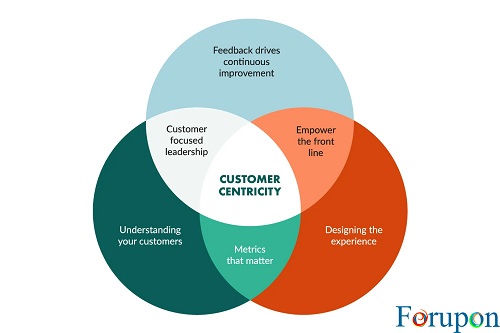Customer-centricity: what does it really mean and how can you achieve it?
What does it mean to be customer-centric? Put simply, customer-centricity describes a philosophy/strategic intent whereby a business is entirely focused on and engages with, its customers in a way that provides a positive customer experience before and after a sale in order to drive repeat business, customer loyalty, and of course profits.
Of course, the customer has always been central to businesses, but there is a significant difference between customer-centric and customer-first. Customer-centricity is about much more than offering good service, it is about recognizing how your customers behave, and what they want and ensuring that every part of your organization is focused on delivering services that benefit the customer. Customer Centricity.
Businesses such as Amazon have spent years creating a culture around the customer and their needs. Their commitment to delivering customer value is genuine and their organization-wide culture focuses on customers both at the front and back-end.
Econsultancy recently asked what the most important characteristic is in order to establish a truly “digital-native” culture. 58% of respondents answered that being customer-centric is.
This isn’t just a story of great customer experience and brand equity either; focusing on the customer makes sound business sense. Research by Deloitte has found that customer-centric companies are 60% more profitable compared to companies that were not focused on the customer.
Key challenges
The power shift between brand and customer is generally acknowledged to have tipped during the economic downturn and has created what some refer to as consumer democracy. Customers today are more discerning about the brands they engage with and give their money to. As a result, the companies that are coming out on top are those who demonstrably respect their customers and reward their patronage with great service. This should be the benchmark for long-term relationships rather than a calculated part of the acquisition process.
Alongside this evolution we’ve seen the growth and increasing predominance of social media marketing, social selling, and so-called ‘earned’ media, which have become a major part of the customer journey. Customers can now compare products and services in real-time and across multiple devices, which has presented a huge challenge for many brands.
Many companies are struggling with this change and are struggling to become truly customer-centric organizations – with the biggest challenge being their inability to effectively share customer information across departments.
The major shift for businesses is that rather than focusing on your products and who you’re going to sell them to (and how), your focus has to be on what your customers are doing, how they’re behaving, and what they actually need and want. By re-designing your business from a customer’s perspective, not only will you be focused on their needs but you will defend against disruption (which is ultimately only another entity understanding your customers better than you do) and develop services and products that are relevant to customers now and as they grow. Customer Centricity.
Key steps to becoming truly customer-centric
There are of course no magic bullets but there are some simple checks and milestones you can gauge your progress by. Your ultimate agenda is to anticipate customers’ needs and engage with and delight them with services and products that fit their lifestyles and behaviors, but which they may not have perceived are available anywhere – this is how so-called disruptors gain ground so quickly.
Four best practices that stand out in achieving customer-centricity are:
- A commitment to what customers want and need and an NPD and
business development culture that takes this knowledge (or desire for it) as the key to all product development. This includes embracing crowd-sourcing and multiple customer interfaces across all touchpoints, making customers part of your ideation and QA processes.
- Live and breathe the customer-centric ethic. Ensure your entire business and workforce understand that without the customer, you cannot succeed.
- Marketers inside customer-centric organizations understand what customers want, and use customer data to capture customer insights and share this across the organization. They are committed not only to selling products but to building relationships designed to maximize the customer’s experience.
- Embrace data and what it tells you. Analyse, plan, and implement strategies informed by proven demonstrable live customer data, focused on creating and keeping profitable and loyal customers rather than a constant cycle of churn and re-acquisition.
At its heart, customer-centricity is a relatively simple concept. However, achieving it can be challenging. Having said that, it is certainly within the grasp of the majority of organizations and doesn’t necessarily mean embarking on a hugely complex process. What it does need is access to the right expertise and advice to ensure that the customer is truly at the heart of everything you do.
This article was first published here.


Comments are closed.